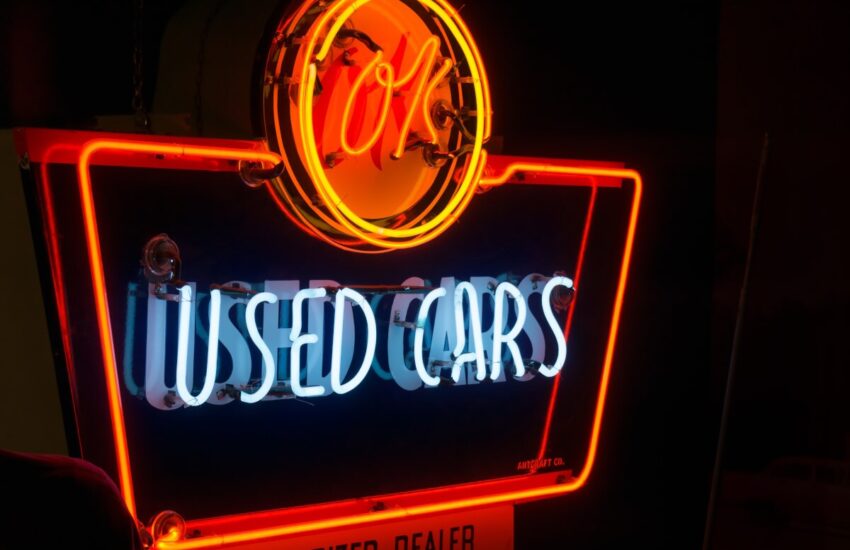Negotiating the price of a used car when you have a trade-in can feel like a complex chess game. However, with the right strategy and knowledge, you can navigate this process to secure the best deal possible. In this post, we’ll explore effective tactics for negotiating the price of a used car with a trade-in.
Understanding the Market
Before you enter any negotiation, it’s crucial to have a clear understanding of the market value of both the car you’re interested in buying and the one you’re trading in. Use resources like Consumer Reports to get an estimate of what both cars are worth. Remember, the condition, mileage, and features of your car will significantly affect its trade-in value.
Preparing Your Trade-In
First impressions matter. Make sure your trade-in looks its best. This means cleaning it thoroughly, both inside and out, and addressing any minor repairs that could affect its appearance or functionality. Keep in mind, however, that investing in major repairs might not be cost-effective, as the increase in trade-in value may not offset the repair costs.
Getting Your Trade-In Appraised
Before you head to the dealership, consider getting your car appraised by a third party. This will give you a solid foundation for what your trade-in is worth. Some dealerships might offer less than your car’s actual value, so having a professional appraisal can serve as a powerful negotiation tool.
The Two Transactions
It’s important to treat the purchase of the used car and the trade-in as two separate transactions. This ensures clarity in negotiation and helps you understand exactly how much you’re paying for the new car and how much you’re getting for your trade-in. Some dealers might try to bundle the two to make the deal seem more appealing, but this can often lead to confusion and a less favorable deal.
Negotiating the Price of the Used Car
Once you have a clear idea of what your trade-in is worth, start negotiating the price of the used car. Don’t disclose your intention to trade in your car just yet. Focus on agreeing on a price for the used car first. You can use your research on the car’s market value, point out any flaws or issues, and compare prices from other dealers to strengthen your position.
Introducing the Trade-In
After settling on a price for the used car, bring up your trade-in. The dealer will assess your car and offer a trade-in value. This is where your prior research and appraisal come in handy. If the dealer’s offer is lower than your research indicates it should be, don’t hesitate to negotiate or present your appraisal documentation.
Understanding the Dealer’s Perspective
Remember, dealerships are in business to make a profit. Your trade-in will likely be sold for more than what they offer you. Understanding this can help you negotiate more effectively. Aim for a trade-in value that’s fair and leaves room for the dealer to make a profit, but also respects the worth of your vehicle.
Be Prepared to Walk Away
One of your strongest negotiating tools is your ability to walk away from a deal that doesn’t meet your expectations. If you’re not getting a fair price on either the used car or your trade-in, don’t be afraid to leave and explore other options. Often, the possibility of losing a sale can bring the dealer back to the negotiating table with a better offer.
Financing Considerations
If you’re financing the purchase of the used car, be cautious about how the trade-in is factored into the financing. Sometimes, dealers will use a high trade-in offer to mask a higher price on the used car. Ensure that the final numbers add up in your favor, and be wary of extended warranties or additional features that can inflate the total cost.
Finalizing the Deal
Once you’re satisfied with the price of the used car and the value offered for your trade-in, it’s time to finalize the deal. Review all paperwork carefully before signing, ensuring that all terms discussed are clearly stated. This includes the purchase price of the used car, the trade-in value, and any financing terms if applicable.
Post-Purchase Tips
After the deal is done, remember to cancel any insurance on the traded-in vehicle and transfer it to your new car. Also, keep an eye on all post-purchase documentation, like the title transfer, to ensure everything is processed correctly.
Wrapping It Up
Negotiating the price of a used car with a trade-in doesn’t have to be intimidating. By doing your research, separating the transactions, and being prepared to negotiate each part of the deal, you can confidently navigate the process. Remember, knowledge is power in any negotiation, and being informed is your best strategy for success.
AutoByPayment.com offers accurate estimates of new and used car loan payments based on self-selected credit score, current rebates, down payment, and trade equity or negative equity, without customers having to provide their personal identifying information such as email and phone.
